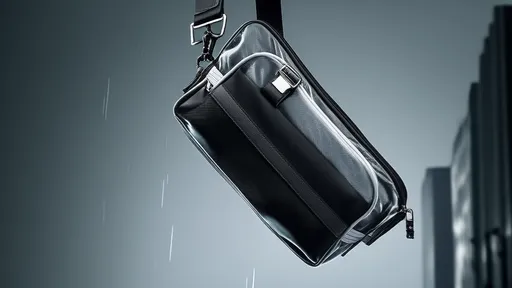The world of fashion and outdoor gear has witnessed a revolutionary innovation in recent years: self-storing down jackets that utilize inflatable compression technology. This groundbreaking approach to garment storage and portability is changing how adventurers, travelers, and urban dwellers alike think about their winter wear.
Traditional down jackets, while incredibly warm, have always posed a significant packing challenge. Their bulky nature makes them difficult to store in luggage or backpacks, often forcing travelers to wear them during transit regardless of temperature. The new generation of inflatable compression jackets solves this age-old problem through an ingenious combination of textile engineering and air pressure technology.
At the heart of these jackets lies a sophisticated valve system that allows users to remove air from specially designed compartments within the garment. When deflated, what was once a voluminous winter coat collapses into a compact bundle roughly the size of a water bottle. The process is remarkably simple - just seal the jacket's special valves, roll or fold the garment to push air out, and watch as it shrinks before your eyes.
The materials science behind this innovation is equally impressive. Designers have developed hybrid fabrics that maintain their insulating properties even when compressed. Unlike traditional compression sacks that can damage delicate down clusters over time, the controlled air pressure system in these jackets preserves the loft and warmth-retention capabilities of the premium goose or duck down filling.
Outdoor enthusiasts have been particularly quick to adopt this technology. Backpackers can now bring serious cold-weather protection without sacrificing precious pack space. Mountaineers appreciate being able to stow their insulation layer during strenuous uphill sections, then quickly reinflate it during rest stops. Even business travelers find value in being able to pack a full-performance winter coat in their carry-on luggage.
The inflation mechanism deserves special attention. Most models use either a simple mouth-inflated tube system (similar to camping mattresses) or incorporate a small hand pump in their storage pouch. High-end versions feature one-way valves that prevent air from escaping during compression, while allowing easy reinflation when needed. The entire process from packed to fully inflated takes less than a minute in most cases.
Manufacturers have paid equal attention to the jackets' performance when worn. The air chambers are strategically placed to avoid creating uncomfortable pressure points, and the baffle construction ensures even distribution of the down filling. Many models actually achieve better warmth-to-weight ratios than traditional jackets, as the compression system eliminates the need for additional storage bags or compression straps that add bulk.
Environmental considerations have played a significant role in the development of these garments. By dramatically reducing the packed size, they enable more efficient transportation and storage - cutting down on shipping emissions and warehouse space. Several brands now use recycled materials for both the outer shells and the inflation components, while maintaining the durability needed for harsh outdoor conditions.
The market response has been overwhelmingly positive since the first commercial models appeared three years ago. What began as niche products for ultralight backpackers has expanded into mainstream fashion, with urban-oriented designs appearing in major cities worldwide. The technology has even spawned new categories like inflatable compression vests and travel blankets using the same principles.
Looking ahead, industry experts predict further refinements to the technology. Next-generation prototypes demonstrate potential for adjustable insulation levels (by varying the amount of trapped air) and even integrated heating elements. As material science advances, we may see versions that can compress even further while maintaining warmth and durability.
For consumers considering these innovative jackets, several factors warrant consideration. The compression mechanism adds a slight weight penalty compared to traditional down jackets - typically 100-200 grams. Care instructions also differ, as the valve systems require occasional cleaning to maintain proper function. However, most users find these tradeoffs well worth the unparalleled convenience.
The inflatable compression jacket represents more than just a novel storage solution. It exemplifies how functional apparel can evolve to meet the changing needs of modern life. By solving one of winter gear's most persistent problems, it has opened new possibilities for travel, adventure, and daily comfort - proving that even centuries-old clothing concepts can benefit from fresh thinking and technological innovation.

By /Jul 16, 2025

By /Jul 16, 2025

By /Jul 16, 2025

By /Jul 16, 2025

By /Jul 16, 2025

By /Jul 16, 2025

By /Jul 16, 2025

By /Jul 16, 2025

By /Jul 16, 2025

By /Jul 16, 2025

By /Jul 16, 2025

By /Jul 16, 2025

By /Jul 16, 2025

By /Jul 16, 2025

By /Jul 16, 2025

By /Jul 16, 2025

By /Jul 16, 2025

By /Jul 16, 2025